Table of Contents
Hi all, We have also solved 68 questions of Chapter 12 – Some Applications of Trigonometry from RD Sharma Class 10 Maths textbook. You can download these solutions in PDF from the above link.
Ex 9.1 Class 10 Maths Question:
A circus artist is climbing a 20 m long rope, which is tightly stretched and tied from the top of a vertical pole to the ground. Find the height of the pole if the Angle made by the rope with the ground level is 30°.
Solution:
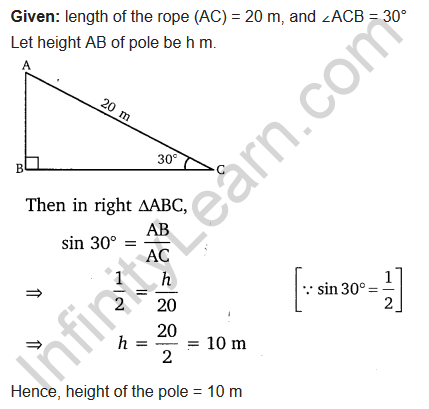
Question: A tree breaks due to a storm, and the broken part bends so that the top of the tree touches the ground making an angle of 30° with it. The distance between the foot of the tree to the point where the top touches the ground is 8 m. Find the tree’s height.
Solution:
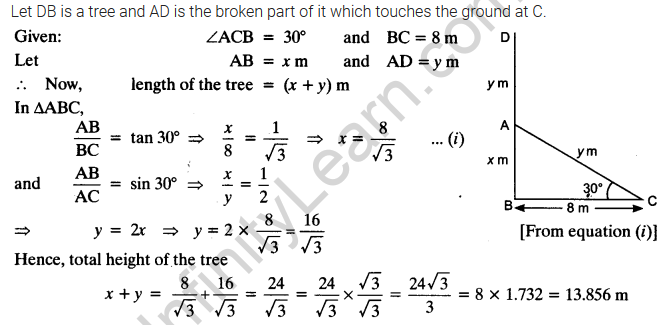
You can also download the free PDF of Ex 9.1 Class 10 Some Applications of Trigonometry NCERT Solutions or save the solution images and take the printout to keep it handy for your exam preparation.
Question: A contractor plans to install two slides for the children to play in a park. For the children below the age of 5 years, she prefers to have a slide whose top is at the height of 1.5 m and is inclined at an angle of 30° to the ground, whereas for elder children, she wants to have a steep slide at the height of 3 m, and inclined at an angle of 60° to the ground. What should be the length of the slide in each case?
Solution:
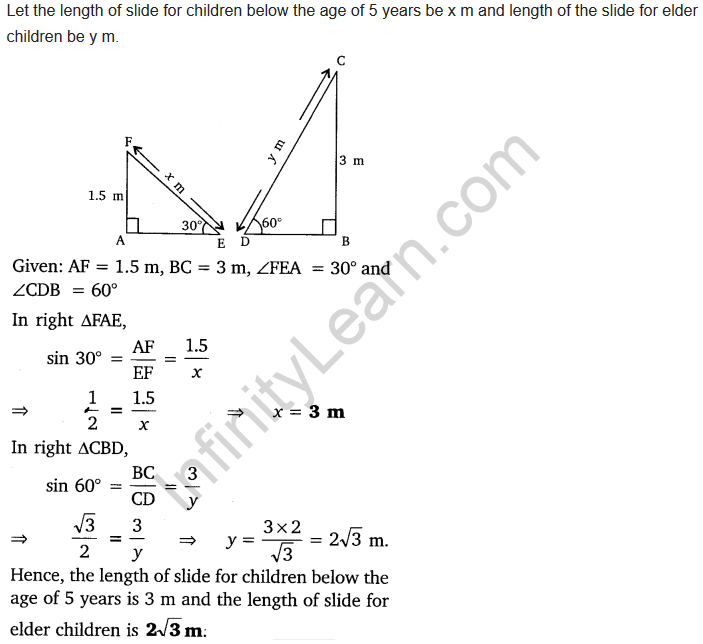
Question: The Angle of elevation of the top of a tower from a point on the ground, which is 30 m away from the foot of the tower, is 30°. Find the height of the tower.
Solution:

Question: A kite is flying 60 m above the ground. The string attached to the kite is temporarily tied to a point on the ground. The inclination of the string with the ground is 60°. Find the length of the string, assuming that there is no slack in the string.
Solution:
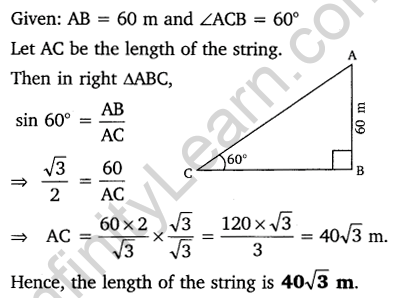
Question: A 1.5 m tall boy is standing at some distance from a 30 m tall building. The Angle of elevation from his eyes to the top of the building increases from 30° to 60° as he walks toward the building. Find the distance he walked towards the building.
Solution:
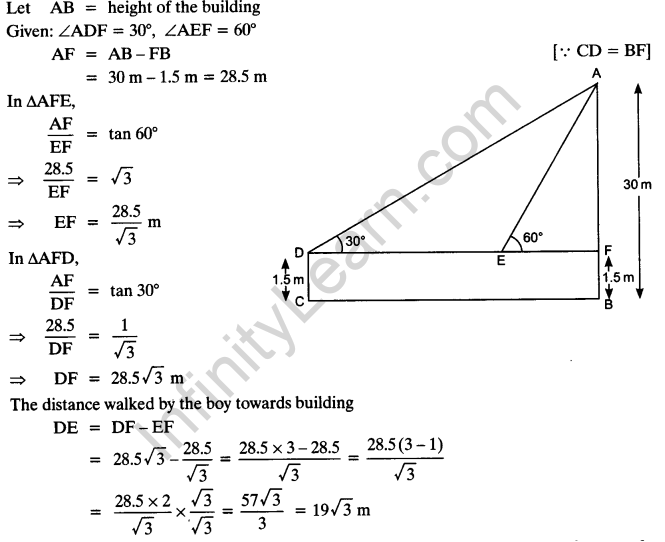
Question: From a point on the ground, the angles of elevation of the bottom and the top of a transmission tower fixed at the top of a 20 m high building are 45° and 60°, respectively. Find the height of the tower.
Solution:
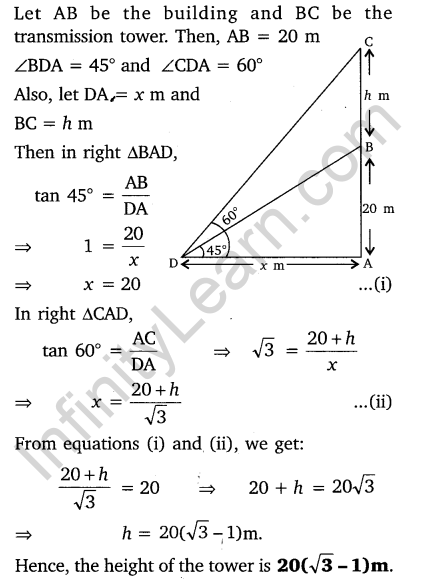
Question: A statue, 1.6 m tall, stands on the top of a pedestal. From a point on the ground, the Angle of elevation of the top of the statue is 60°, and from the same point, the Angle of elevation of the top of the pedestal is 45°. Find the height of the pedestal.
Solution:
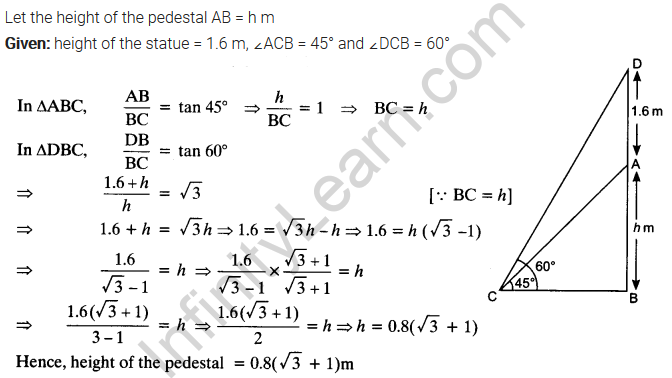
Question: The Angle of elevation of the top of a building from the foot of a tower is 30°, and the Angle of elevation of the top of the tower from the foot of the building is 60°. If the tower is 50 m high, find the height of the building.
Solution:
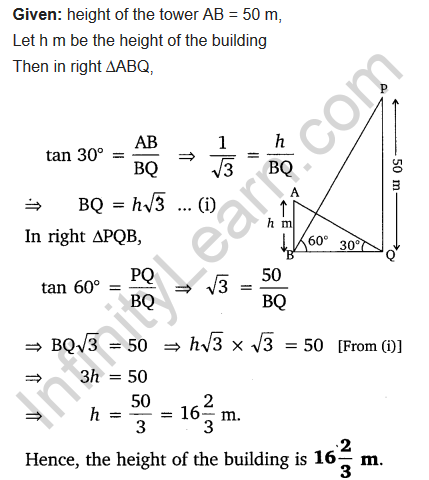
Question: Two poles of equal heights are standing opposite each other on either side of the road, which is 80 m wide. From a point between them on the road, the elevation angles of the top of the poles are 60° and 30°, respectively. Find the height of the poles and the distance of the point from the poles.
Solution:
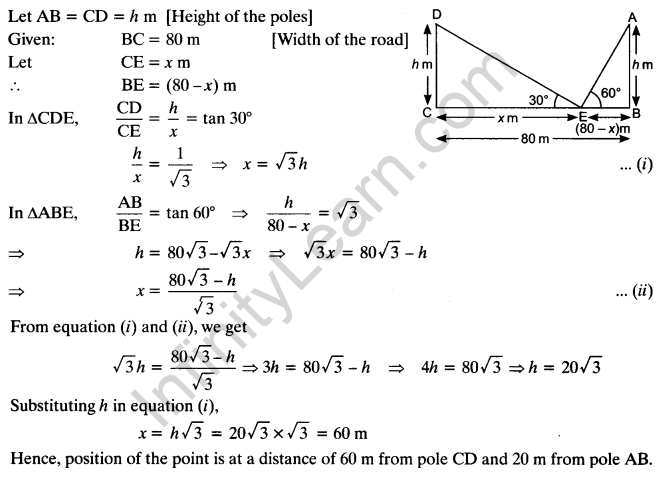
Question: A TV tower stands vertically on a bank of a canal. From a point on the other bank directly opposite the tower, the Angle of elevation of the top of the tower is 60°. From another point 20 m away from this point on the line joining this point to the foot of the tower, the Angle of elevation of the top of the tower is 30° (see the given figure). Find the height of the tower and the width of the CD and 20 m from pole AB.
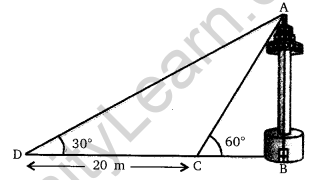
Solution:
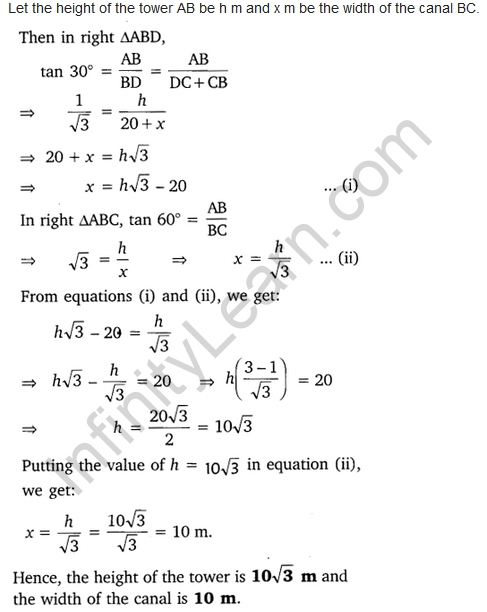
Question: From the top of a 7 m high building, the Angle of elevation of the top of a cable tower is 60°, and the Angle of depression of its foot is 45°. Determine the height of the tower.
Solution:
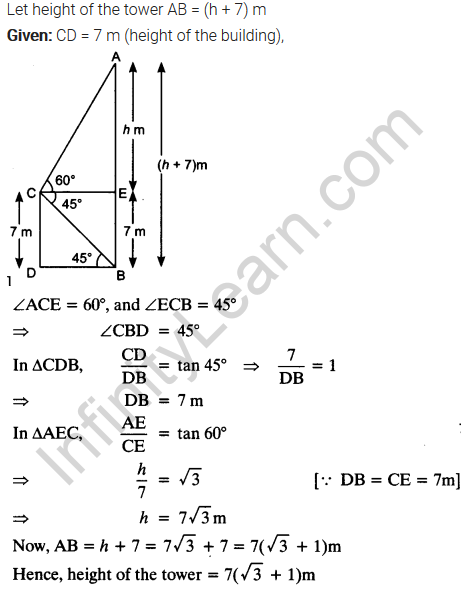
Question: As observed from the top of a 75 m high lighthouse from the sea level, the angles of depression of two ships are 30° and 45°. If one ship is behind the other on the same side of the lighthouse, find the distance between the two ships.
Solution:
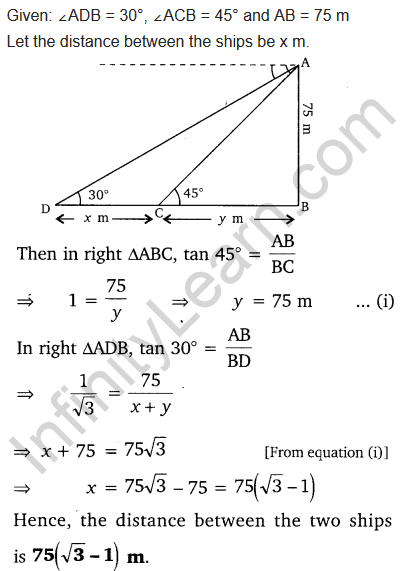
Question: A 1.2 m tall girl spots a balloon moving with the wind in a horizontal line at 88.2 m from the ground. The Angle of elevation of the balloon from the eyes of the girl at any instant is 60°. After some time, the Angle of elevation reduces to 30° (see figure). Find the distance traveled by the balloon during the interval.
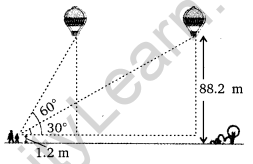
Solution:
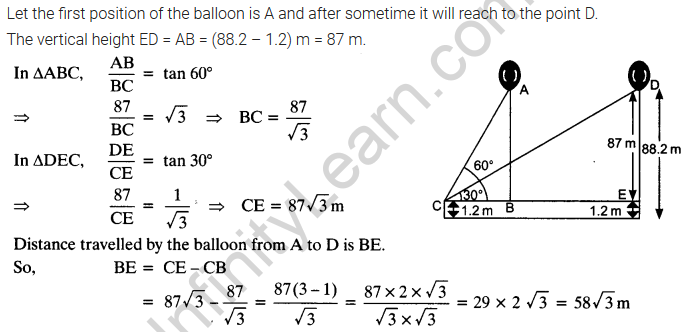
Question: A straight highway leads to the foot of a tower. A man standing at the top of the tower observes a car at an angle of depression of 30°, approaching the foot of the tower at a uniform speed. Six seconds later, the Angle of depression of the car is found to be 60°. Find the time taken by the car to reach the foot of the tower from this point.
Solution:
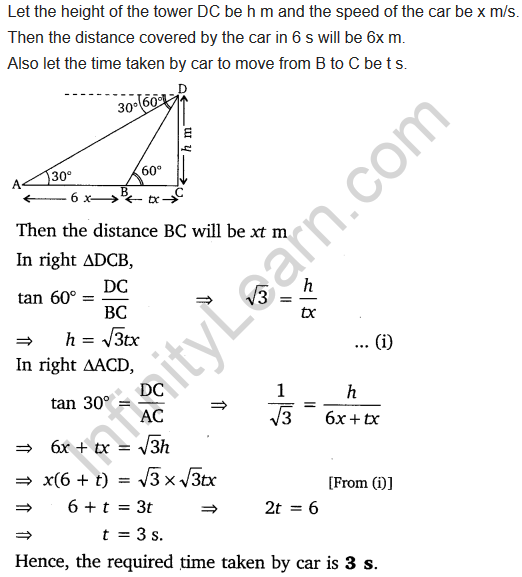
Question: The angles of elevation of the top of a tower from two points at a distance of 4 m and 9 m from the base of the tower and in the same straight line with it are complementary. Prove that the height of the building is 6 m.
Solution:
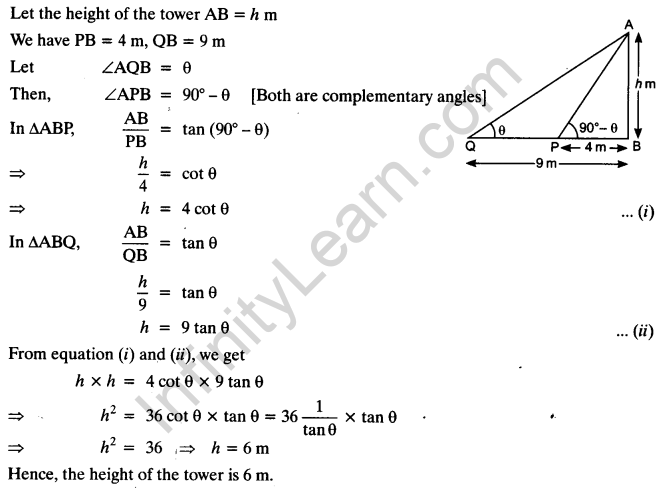
Class 10 Maths Some Application Of Trigonometry Mind Maps
SOME APPLICATIONS OF TRIGONOMETRY
Introduction
The height or length of an object or the distance between two distinct objects can be determined with the help of trigonometric ratios.
Line of Sight and Angle of Elevation
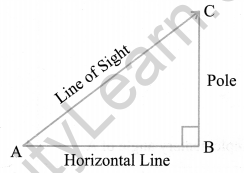
In the above figure, the line AC drawn from the eye of an observer at A to the top of the pole ‘C’ is called the line of sight. The observer is looking at the top of the pole. The Angle BAC, so formed by the line of sight with the horizontal, is called the Angle of elevation of the top of the pole from the eye of an observer.
Angle of Depression
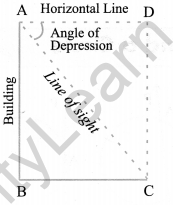
In the above figure, the line AC is the line of sight as the observer looks downwards from the top of the building at A towards the object at C. Here, angle DAC is formed by the line of sight with the horizontal when the observer lowers their head, is called the Angle of depression.

From the above figure, if we want to find the height CD of the pole without actually measuring it, we need the following information:
(i) Distance ED of the observer from the pole.
(ii) the Angle of elevation ∠BAC of the top of the pole.
(iii) the height AE of the observer if it is considerable.
Assuming that the above three conditions are known, we can determine the height of the pole in the following way.
In the figure, CD = CB + BD. Here, BD = AE, which is the height of the observer.
To find BC, we will use trigonometric ratios of ∠BAC or ∠A.
In ∆ABC, the side BC is the opposite side to the known ∠A. Now we use either tan A or cot A, as these trigonometric ratios involve AB and BC to find BC.
Therefore, tan A = \(\frac{B C}{A B}\) or cot A = \(\frac{A B}{B C}\), which on solving would give us BC. By adding AE to BC, you will get the height of the pole.

